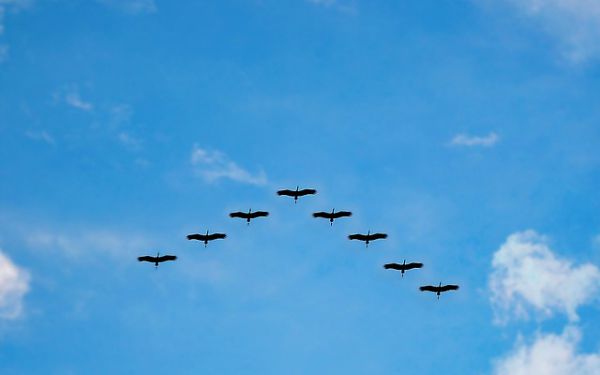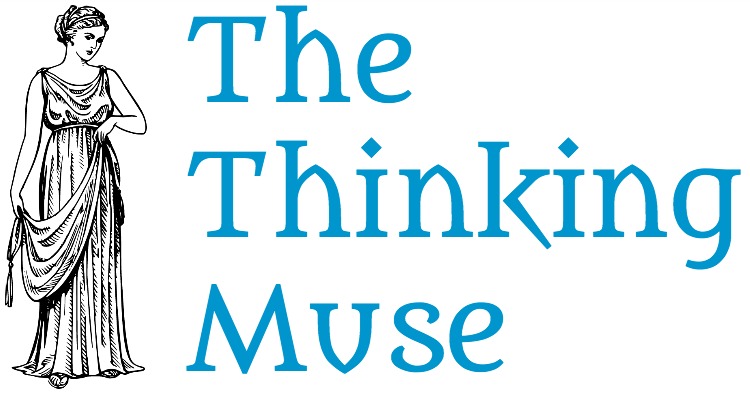10 mesmerizing examples of human collective behavior

I am an original.
I think for myself and do my own thing. I don’t want what everyone else has. I favor traditional with a twist. I like a little quirk. That’s how I roll.
You’re unique, too.
However, at the end of the day we are all human. As you already know, humans are social animals. No matter how introverted, shy, or withdrawn we may be, we still need other humans to exist.
Almost every animal species shows collective behavior at some stage in their life cycle. By collective behavior, I mean when individuals join spontaneously to act as a group. Fish school. Birds flock. Insects swarm. Quadrupeds herd. Humans crowd. That is the way of life.
Despite how common this social interaction is, it is still strangely fascinating to watch. Often mesmerizing. Check out this clip of a murmuration of starlings, a classic example of collective behavior.
How cool is that!?
Turns out there are a lot of people interested in the shape shifting fluid movements of groups. Whole fields and theories in fact. They study collective behavior, crowd psychology, collective consciousness, and the list goes on. They study how it works, what we can learn from it, and how we can use that information to improve our society.
So, that is the topic of this article. Collective behavior. First a little background on the field and then on to 10 can’t-miss examples of human collective behavior.
Animal collective behavior
A lot of inquiry into collective behavior is based on the study of animals. There are many examples to consider. Researchers analyze the following aspects of collective behavior:
1. Coming together. This is how the group establishes itself and the size of the group.
2. Information transfer. This is how information is gathered and propagated throughout the group.
3. Making decisions/collective wisdom. This is when there is a change or choice made that impacts the entire group.
4. Moving together. This is how the entire group moves and how the individual members move relative to their neighboring members.
5. Synchronization. This is how members of the group act in unison.
6. Spatial structures. This is how the physical infrastructure is created for the group.
7. Regulation. This is how new input or feedback allows for a group equilibrium to be established.
8. Complicated interactions. This is how the members interact to allow the group to function.
9. Evolution. This is how cooperation and behavior contribute to the future or strengthening of the group as a whole.
What the studies are finding is there are benefits to this social behavior. The most notable are:
- Protection from predators
- Efficient locomotion
- Ease of foraging
Of course, we also hear about the downside. Heartbreaking events such as mass whale beachings are also the result of this type of behavior. I guess there are good and bad sides to everything.
I do find the information interesting, but I can’t help but be pulled back to the amazing visuals. I have picked 2 videos to show you what I mean.
This video displays underwater collective behavior courtesy of a school of fish.
This video features many animals. Shots are interspersed with simple rules that simulations have used to mimic the patterns.
These videos are captivating, almost hypnotic. Maybe that is the point, to stop thinking and just follow. hmmmmmm. Maybe there is something to Contagion Theory.
Canadian wildlife biologist, Karsten Heuer, and his filmmaker wife followed a herd of caribou through their migration. They encountered the same environment, hardships, and dangers as the herd. Over the months, they felt as if they became a part of the herd. While it was difficult to explain or articulate the connection, they said it provided comfort to them. Wow, that is a wild story! We have so much to learn.
Human collective behavior
The study of animal collective behavior has sparked interesting correlations to human behavior. After all, humans are social animals as well. Examples of human collective behavior can be seen in:
- riots
- mass hysteria
- fads
- rumors
The study of human collective behavior can help us understand human behavior, but also inform processes and infrastructure for human society. One of the tools used in studies is Boids.
Boids is a computer program that was designed by Craig Reynolds in 1986. It simulates swarm behavior using a genetic algorithm. Applying user-defined behavioral rules, it enables the entities to act on their own. Researchers can then study the resulting outcomes or patterns. End results can be that of swarm intelligence or emergence of complex behaviors.
These types of models can be used in a variety of applications. For instance, it was used to simulate bats in Batman Returns and complex battle scenes in The Lord of the Rings trilogy.
Being able to artificially create simple organisms has been used to study life. Scientists look at when and how artificial organisms evolve, interact, and develop. Models such as Boids allow numerous adjustments and iterations to occur in a relatively short time. It has also been used in the field of artificial intelligence.
Applying knowledge of human collective behavior can inform the design of large-scale infrastructure such as stadiums and roads. It can also help determine processes for serving a lot of people such as boarding airplanes, call center staffing, and retail checkout lanes.
Human collective behavior isn’t just about function and efficiency. It can also be the source of joy. The aesthetic, balance, and harmony can be so satisfying to humans.
(See Related: 5 reasons a kaleidoscope isn’t just for kids anymore and why you should collect them)
I have collected 10 clips of human collective behavior. The interesting thing is the content of these videos is entertaining. They are almost all in competition and involve leisure activities. Yes, the participants are doing it for fun. So even if you are fiercely independent you will find yourself wanting to join in the spectacle.
Okay, full disclosure. I really love this kind of stuff. I have judged high school dance teams for over 20 years. So the synchronization paired with difficult or funny movement in these videos can make me giddy.
I included quite a variety. I hope you enjoy them. If you don’t, then I may have to ask for your human club card back. Okay, okay, I jest.
10 times to love human collective behavior
1. Walking
Did you know there was such a thing? I love how they incorporate humor. So original.
2. Drumline
Drums always cause a very primal feeling to well in my stomach. Add the lights and visuals and they have a winning combination here.
3. Swimming
Watching this group, I almost find myself holding my breath while they are underwater. I guess I became a part of their group.
4. Gymnastics
Wow, wow, wow! The skills, the synchronization, the technique. I can’t imagine how long they had to practice to perfect this routine.
5. Skating
This is a very unforgiving sport. Can you imagine? Just one woman needs to fall to throw a wrench in the entire performance.
6. Singing
This video gets my vote for best energy. Incredible. Contagious!
7. Skateboarding
This never even occurred to me. I just love the image of these guys practicing. Cool way to use a passion.
8. Toys (robots)
That is seriously impressive how the interrupted robot gets back into the swing of things.
9. Skydiving
What an awesome shot! Since I would never in a million years skydive, now I have the perspective and can keep myself safe on the ground.
10. Flash mob
Have you ever seen or participated in a flash mob? They seemed to be a fad a few years back. So fun.
Alone or are you going to join in?
What do you think? What was your favorite clip? Mine was 4, the gymnastics. Amazing.
Have you ever given this type of collective behavior any thought? Have you ever played with ants as a child or sat back and just watched the activity of a flock of birds?
Do you purposely avoid taking part in any group-like activities? Or…Have you ever intentionally taken part in collective behavior for recreation? Marching band, anyone? Fess up. Don’t worry we will still respect your individuality.
Please let me know your thoughts and insight in the poll or comments. Thanks!
Resources
Abaid, Nicole. “Dissertations & Theses – Gradworks.” ProQuest Document View. ProQuest.com, n.d. Web. 15 Sept. 2015. <http://gradworks.umi.com/35/18/3518562.html>.
Barkan, Steve. “Chapter 21 Section A Types of Collective Behavior.”Chapter 21 Section A Types of Collective Behavior. Professional Education, Testing and Certification Organization International, Sept. 2010. Web. 15 Sept. 2015. <http://www.peoi.org/Courses/Coursesen/socfwk/ch/ch21a.html>.
“Collective Animal Behavior.” Collective Animal Behavior. N.p., n.d. Web. 15 Sept. 2015. <http://www.collective-behavior.com/Site/Home.html>.
DeLellis, Pietro, Giovanni Polverino, Gozde Ustuner, Nicole Abaid, Simone Macrì, Erik M. Bollt, and Maurizio Porfiri. “Collective Behaviour across Animal Species.”Nature.com. Nature Publishing Group, 16 Jan. 2014. Web. 15 Sept. 2015. <http://www.nature.com/articles/srep03723>.
Miller, Peter. The Smart Swarm: How Understanding Flocks, Schools, and Colonies Can Make Us Better at Communicating, Decision Making, and Getting Things Done. New York: Avery, 2010. Print.
Strycker, Noah K. The Thing with Feathers: The Surprising Lives of Birds and What They Reveal about Being Human. New York: Riverhead, 2014. Print.
Wikipedia contributors. “Swarm behaviour.” Wikipedia, The Free Encyclopedia. Wikipedia, The Free Encyclopedia, 3 Sep. 2015. Web. 15 Sep. 2015.




